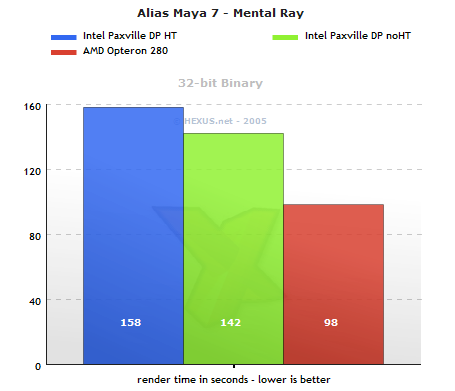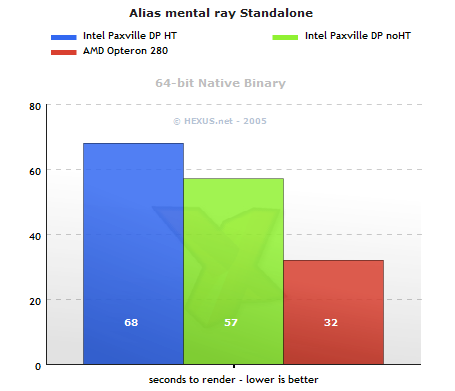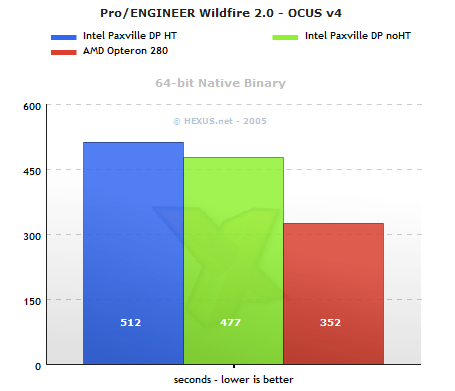Professional DCC and CAD/CAM Applications
Alias Maya 7 - mental ray Render 1080p
We render a custom scene here to HD resolution, using the 32-bit CPU-based Mental Ray renderer that ships with Maya 7. If you've never come across Maya before, here's what Alias, it's creators, have to say about it: " Academy Award® winning Maya® software is the world's most powerfully integrated 3D modeling, animation, effects, and rendering solution. Maya also adds to the quality and realism of 2D graphics. That's why film and video artists, game developers, visualization professionals, Web and print designers turn to Maya to realize their creative vision." It's quite the heavyweight in the DCC industry.
HT is a performance loss for Paxville DP as tested, with the Opteron system 30% faster than Paxville DP with HT off.
mental ray Standalone 64-bit
There's also a standalone version of the mental ray rendering engine with a 64-bit binary collection, so we test that too with a different scene. mental ray just loves to chew up as many CPU cores as you can throw at it. Real CPU cores though, mostly.
The pair of Opteron 280s in the Gravistar XRS are nearly 45% faster than non-HT Paxville DPs at 2.8GHz in the comparison system. Again, HT is a performance loss.
Pro/ENGINEER Wildfire 2.0
Pro/ENGINEER is one of the stalwarts, if not the stalwart, of the CAD/CAM industry as far as software goes. We use a freely available benchmark trail to enable Pro/ENGINEER to abuse CPU cores.
Nothing really changes, the Opterons staying a large margin ahead of the 2.8GHz Paxville Xeons yet again. Let's explain why that's the case almost each and every time, before summing things up.









